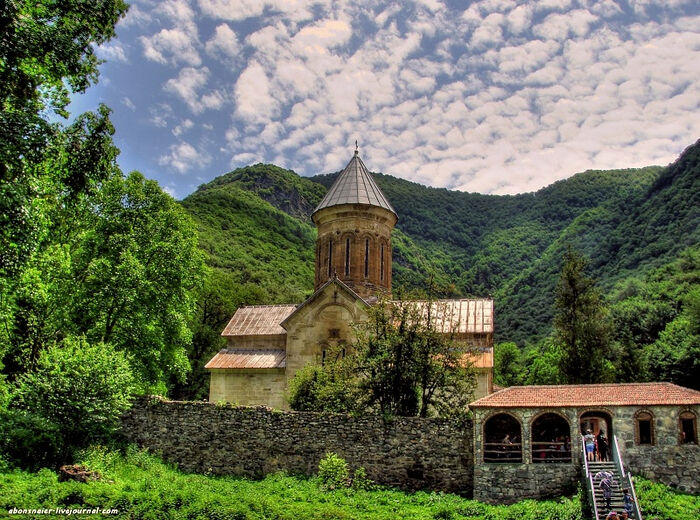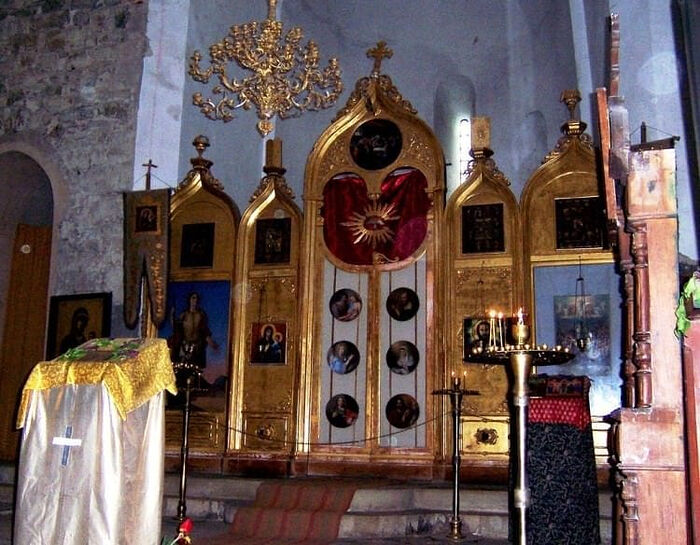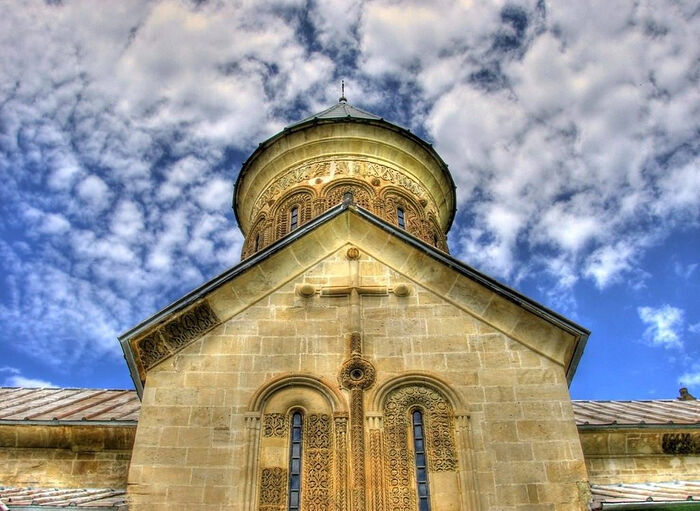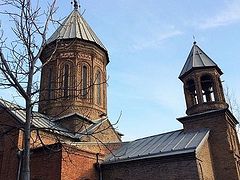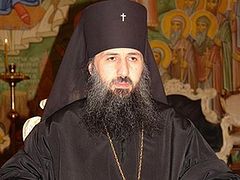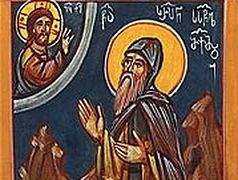Smoke was coming from the courtyard. Dry twigs were crackling in the raging flames. A woman’s scream rang out:
“We’re on fire!!!”
The children, who remained in the church, began to cry.
From around the corner, where a handful of surviving nuns could still be made out in the coming smoke, came the sound of singing:
“Let us, who mystically represent the cherubim and sing the thrice-holy hymn to the Life-Giving Trinity, lay aside all earthly cares.”
And everyone who was shut up in the small monastery joined in this holy chorus.
No one was expecting to be saved. And there was nowhere for this salvation to come from anyways. After a small bloody siege, Tamerlane’s forces seized Kvatakhevo Monastery and looted the valuables in the altar, and the surviving nuns and women and children from the surrounding villages were driven into the Church of the Dormition of the Mother of God.
The tongues of fire were already engulfing the entire building from all sides. The voices from within grew fainter and fainter and soon ceased altogether.
This occurred in 1386.
Traces of the fire remained on the church floor for a long time, and all the victims were canonized as the Kvatakhevo Martyrs in the eighteenth century. Since then, no woman has set foot in Kvatakhevo. Only men are allowed to enter, to avoid desecrating the memory of innocently murdered nuns. According to custom, people enter only barefoot. Muslims also obey this rule. Traces of the blood of the innocently murdered martyrs are imprinted upon the walls of the church. They could still be clearly seen in the late nineteenth century. Even now you can see black silhouettes of charred bodies on the stone floor.
The monastery was restored by the efforts of King Alexander I the Great in the first half of the fifteenth century.
The name of Kvatakhevo Monastery comes from two Georgian words: “kvata”—stone, and “khevi”—ravine. It’s located between Tbilisi and Gori and belongs to the Diocese of Samtavisi.
Since the foundation of Kvatakhevo (in the twelfth to thirteenth centuries), it was a convent and also a major literary center, housing important manuscripts. There was also a treasure trove of jewelry. Therefore, it was considered one of the richest monasteries of its time.
Kvatakhevo Monastery is also known for the fact that King Luarsab II of Kartli married the sister of Giorgi Saakadze there. The king later became a martyr.
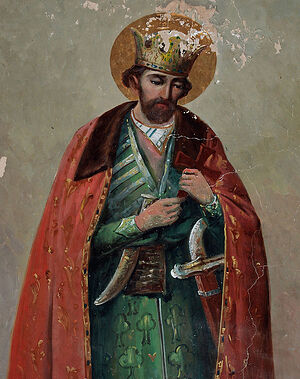 Luarsab was the son of Giorgi X (1600–1603), who was poisoned by the Persian Shah Abbas I. In 1609, Georgia was invaded by an army led by Mohammed Khan. The young king waged a decisive battle against the Turks, and the Georgian army put to flight the enemy’s 60,000-strong army.
Luarsab was the son of Giorgi X (1600–1603), who was poisoned by the Persian Shah Abbas I. In 1609, Georgia was invaded by an army led by Mohammed Khan. The young king waged a decisive battle against the Turks, and the Georgian army put to flight the enemy’s 60,000-strong army.
Shah Abbas I ravaged Kakheti and, threatening to lay ruin to Kartli, demanded that Luarsab II come to him, promising to conclude a peace. To save the country from being pillaged, Luarsab went to the shah. And although Shah Abbas I received his guest peacefully, he then began to insist that the Georgian king accept Mohammedanism. Otherwise, he threatened him with terrible torments. The pious King Luarsab II, who had observed strict fasts since childhood and was constantly in prayer, refused without hesitation. They threw him in prison, and then they killed him. He was only thirty-four. Two of his servants were killed along with him.
The bodies of the holy martyrs were thrown into a pit at night without burial, but the next day Christians gave them over to the earth in a common grave.
But let’s return to Kvatakhevo Monastery.
A wonderworking icon and a particle of the relics of St. John the Baptist are preserved there, and it’s believed that they help women be delivered from barrenness.
Another interesting peculiarity: There was a school of psalmody at Kvatakhevo Monastery where the future Bishop Tarasy (Andelaki) of Tsilkani was educated, who in the 1930s baptized a boy named Irakli, now the well-known Patriarch Ilia II of Georgia.
The status of Kvatakhevo has changed now. After the restoration of the church, a men’s monastery was opened there by request of the local population.

